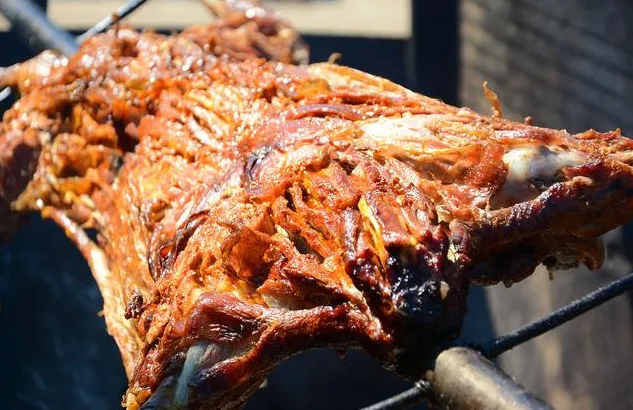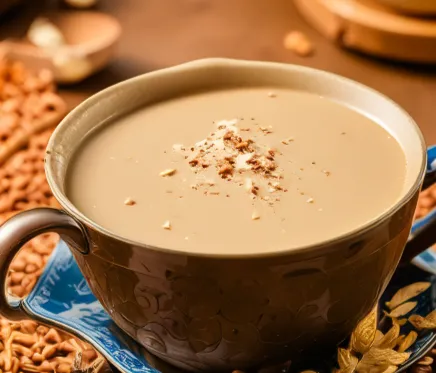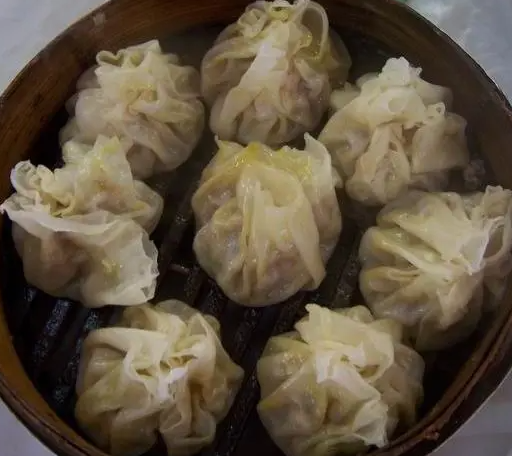1.Tongliao beef jerky

Tongliao beef jerky is a specialty food of Inner Mongolia with a long history. It was once Genghis Khan’s marching rations. This air-dried food is the most convenient food under limited conditions. It is crispy, delicious and nutritious. Today, it is no longer just marching rations, but has become a popular snack and leisure pastime.
2.Candied Milk Tofu

Candied milk tofu is a famous dish at Inner Mongolian banquets. It is made from milk tofu through special processing. Milk tofu is a common dairy food of Mongolian nomads. It is made by coagulating and fermenting cow’s milk, goat’s milk, horse’s milk, etc. It looks like tofu but is not tofu. Its characteristics are sweet and sour taste and rich milk flavor. In addition to eating it directly or brewing it in milk tea, it can also be made into candied milk tofu, which has a soft and tough texture and is a delicacy at banquets.
3.Roasted Lamb

Roasted whole lamb is the most distinctive flavor dish in Inner Mongolia and is known as one of the grassland delicacies. This dish originated from the Mongolian people and was Genghis Khan’s favorite palace dish. It was also a must-have in the Yuan Dynasty’s imperial banquet “Zhama Banquet”. In Hulunbuir, roasted whole lamb is a top-notch dish for entertaining guests. It is usually made from the whole hind leg of a lamb. After being marinated and baked, seasonings are gradually added to make it have excellent color, fragrance, taste and shape. The roasted lamb leg is tender and tender, with a mellow taste and a golden and shiny appearance. It is a healthy, environmentally friendly and delicious green delicacy.
4.Roast Lamb Leg

Roasted lamb leg is one of the most representative delicacies in Inner Mongolia. It evolved from roasted whole lamb and is a local delicacy for entertaining guests. Its uniqueness lies in that it is roasted directly on charcoal fire, so that the lamb is in direct contact with the flames, making it more burnt and fragrant. The hind legs of the lamb are used for making it, because the meat on the hind legs is firm, and after roasting, the appearance is burnt yellow and the meat is fragrant. With cumin and chili, the taste is burnt, salty and spicy, and it is very delicious.
5.milk tea

Inner Mongolian milk tea is a unique salty milk tea, with whole milk and water as the main ingredients, and the taste is different from milk tea in other regions. When making this milk tea, black tea, fresh milk, butter and salt are added, and sometimes it is eaten with fried rice. The brewed milk tea can be sprinkled with some milk skin to increase the taste. The herders in Inner Mongolia love this drink very much, not only because it tastes good, but also because it has the health-promoting effect of warming the stomach and promoting digestion. Milk tea has a long history in Inner Mongolia and is an indispensable part of the local people’s daily diet.
6.Milk skin

Milk skin is the best choice among Mongolian dairy products and is known as the essence of fresh milk. It is made by slowly boiling the fresh milk of horses, sheep, cows and camels, and then picking it up and drying it after the surface is condensed into wax fat. Milk skin is not only mellow in taste, but can also be eaten directly or mixed with other foods. In Mongolian, it is called “Urumu”, which means “white food”. In addition, milk skin is divided into raw and cooked. The raw one is the raw material for making butter, while the cooked one is often eaten with milk tea, milk fruit, and fried rice. It is a good product for entertaining guests.
7.Hand-pulled meat

Hand-pulled meat is a specialty of Inner Mongolia. It is made with mutton as the main ingredient and is a common dish for Mongolian herdsmen to entertain guests. The preparation method of this dish is simple. After slaughtering the sheep, peel the skin, remove the internal organs, remove the head and hooves, and then put it into the pot. Without adding seasoning and salt, boil it in water until it is 70% to 80% cooked. After the dish is cooked, it can be eaten with hands or cut with a Mongolian knife. The meat is tender, delicious and easy to digest. In the Hulunbuir area, hand-pulled mutton has become a rule to entertain distant guests.
8.Hatta Cake

Hada cake is a traditional famous noodle snack in Chifeng City, Inner Mongolia Autonomous Region. It originated in the Ulan Hada area, hence the name. This cake is similar to a snack, and the production process is complicated, including rolling the dough with water and oil noodles and oil pastry, wrapping the dried fruit sweet filling and baking it. It is crispy and sweet, melts in the mouth, and even turns into powder when it falls to the ground, so it is also suitable for the elderly with bad teeth. Hada cake is particularly popular in the Zhaowuda grassland area of Chifeng.
9.Shaomai

Shaomai is a traditional food of Hohhot with a long history. It was famous in Beijing as early as the Qing Dynasty. It has a unique production process and excellent materials. The skin is as thin as a cicada’s wing and crystal clear. The mutton filling is moderately fat and lean, and the seasonings such as green onion and ginger are complete. Shaomai is fresh and fragrant after it comes out of the oven. It looks like a small cake and tastes fragrant but not greasy. It used to be used as breakfast in Hohhot, mostly sold by teahouses. Now it has become a must-have food in many restaurants and a common delicacy in families.
10.Kumiss

Kumiss is the most representative drink in Inner Mongolia, and it was created as early as 1206. It not only tastes fresh and fragrant, but also has the effect of dispelling cold. It is known as “Yuanyujiang” and is one of the eight delicacies of Mongolia. Kumiss was once the main drink in the Yuan Dynasty court and the mansions of Mongolian nobles. Today, it is still a traditional drink and food of the Mongolian people, and is on par with hand-pulled meat and roasted lamb. It is their favorite in daily life and a delicacy for entertaining guests. July and August every year are the best seasons for brewing kumiss.
